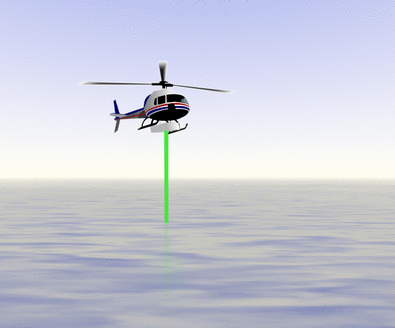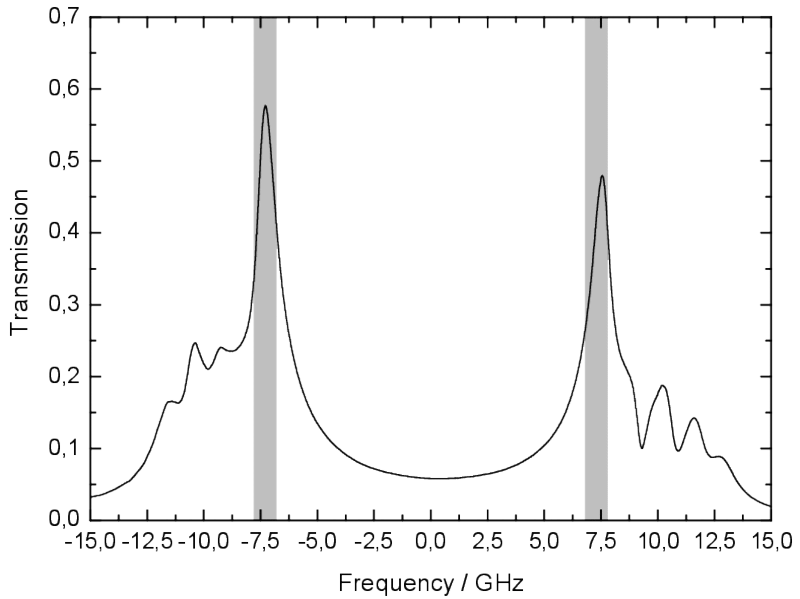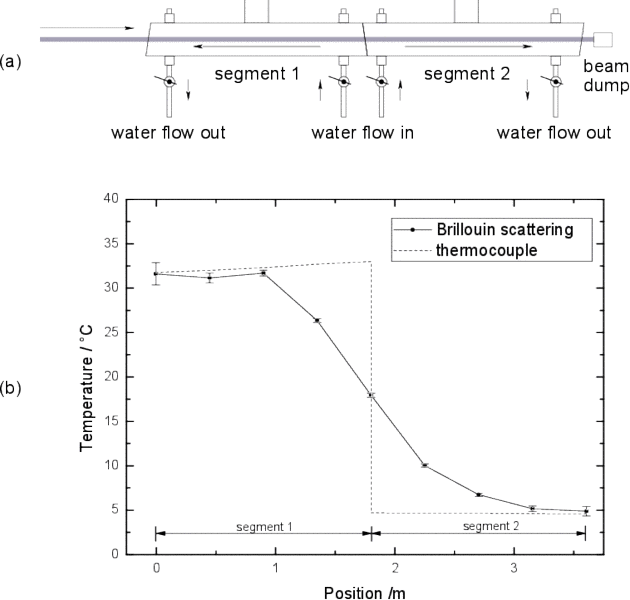The system will for the first time provide the capability of highly accurate remote sensing of temperature, salinity and sound velocity profiles in the ocean. There presently does not exist a remote sensing technique that can achieve the required accuracy of at least 0.1 K. This new approach will be very sensitive and large areas can be surveyed in short periods of time – a requirement vital to large scale measurement campaigns required for long term climate surveys and weather forecasting such as hurricane movements.

The system consists of mainly three parts, the source for the pulse laser light, the receiving optics for the scattered light and the detector unit. The infrared light of a DFB (distributed feedback laser) in a MOFA (master oscillator fiber amplifier with two Yb fibres) setup is cut in transform limited ns-pulses by an AOM. The pulsed laser light is then amplified in four consecutive fiber amplifier stages. The infrared light is frequency doubled to reach the desired wavelength of 543nm. This laser light can be used to obtain the Brillouin scattering in a probe chamber. The backscattered light is guided through a mirror telescope and then detected. The detection is performed by an edge filter, the so called ESFADOF (excited state Faraday anomalous dispersion optical filter) to detect only the desired Brillouin-scattered light.
Next steps
- Complete splicing of the seed source and more parts of the system making it less sensitive to outer disruptions
- Second ESFADOF detector unit
- Demonstration of the simultaneous measurement of the ocean temperature and salinity in the lab as well as in a field test
- Daniel Koestel, Thomas Walther
The Brillouin linewidth in water as a function of temperature
and salinity: the missing empirical relationship
Applied Physics B (2024) 130:53 (opens in new tab) - A. Rudolf, Th. Walther; Opt. Eng. 53(5) 051407 (2014)
- A. Rudolf, Th. Walther; Optics Letter 37 4477-4479 (2012)
- K. Schorstein, A. Popescu, M. Göbel, Th. Walther; Sensors 8, 5820-5831 (2008)
- E. S. Fry, J. Katz, D. Liu, Th. Walther, J. of Mod. Opt. 49, 411 (2002)
- E. S. Fry, Y. Emery, L. Quan, J. Katz, Appl. Opt. 36, 6887 (1996)
- E. S. Fry, Q. Hu, X. Li, Appl. Opt. 30, 1015 (1991)
- S. W. Henderson, E.H. Yuen, E.S. Fry, Opt. Lett. 11, 715 (1986)
- J. L. Guagliardo, Dufilho, Rev. Sci. Instrum. 51, 79 (1980)
- D. A. Leonard et al., Appl. Opt. 18, 1782 (1979)

























